Cytori Citations
Akita, S., et al. “Autologous Adipose-Derived Regenerative Cells Are Effective for Chronic Intractable Radiation Injuries.” Radiation Protection Dosimetry, vol. 151, no. 4, 2012, pp. 656–660., https://doi.org/10.1093/rpd/ncs176.
Andjelkov, Katarina, and Zoran Maricic. “Posterior Fourchette Fissure Resolution after Injection of Autologous Adipose-Derived Regenerative Cells.” Obstetrics & Gynecology, vol. 129, no. 3, 2017, pp. 497–499., https://doi.org/10.1097/aog.0000000000001906.
Arkoulis, Nikolaos, et al. “Stem Cell Enriched Dermal Substitutes for the Treatment of Late Burn Contractures in Patients with Major Burns.” Burns, vol. 44, no. 3, 2018, pp. 724–726., https://doi.org/10.1016/j.burns.2017.09.026.
Aronowitz, Joel A., and Joshua D.I. Ellenhorn. “Adipose Stromal Vascular Fraction Isolation: A Head-to-Head Comparison of Four Commercial Cell Separation Systems.” Plastic and Reconstructive Surgery, vol. 132, 2013, p. 48., https://doi.org/10.1097/01.prs.0000435915.06075.66.
C. Calabrese, A. Kothari, S. Badylak, G. Di Taranto, M. Marcasciano, et al. Oncological safety of stromal vascular fraction enriched fat grafting in two-stage breast reconstruction after nipple sparing mastectomy: long-term results of a prospective study Eur Rev Med Pharmacol Sci. 2018 Aug;22(15):4768-4777. doi: 10.26355/eurrev_201808_15610. PMID: 30070312.
Calcagni, Maurizio, et al. “The Novel Treatment of SVF-Enriched Fat Grafting for Painful End-Neuromas of Superficial Radial Nerve.” Microsurgery, vol. 38, no. 3, 2016, pp. 264–269., https://doi.org/10.1002/micr.30122.
Cervelli, Valerio, et al. “Application of Enhanced Stromal Vascular Fraction and Fat Grafting Mixed with PRP in Post-Traumatic Lower Extremity Ulcers.” Stem Cell Research, vol. 6, no. 2, 2011, pp. 103–111., https://doi.org/10.1016/j.scr.2010.11.003.
Choi, Jae Young, et al. “Adipose-Derived Regenerative Cell Injection Therapy for Postprostatectomy Incontinence: A Phase I Clinical Study.” Yonsei Medical Journal, vol. 57, no. 5, 2016, p. 1152., https://doi.org/10.3349/ymj.2016.57.5.1152.
Daumas, A., et al. “Long-Term Follow-up after Autologous Adipose-Derived Stromal Vascular Fraction Injection into Fingers in Systemic Sclerosis Patients.” Current Research in Translational Medicine, vol. 65, no. 1, 2017, pp. 40–43., https://doi.org/10.1016/j.retram.2016.10.006.
Foubert, P, et al. “ ADIPOSE-DERIVED REGENERATIVE CELLS PROMOTE PROLIFERATION OF CORNEAL EPITHELIAL CELL AND CORNEAL WOUND HEALING.” Cytori Therapeutics.
Foubert, Philippe, et al. “Autologous Adipose-Derived Regenerative Cell Therapy Modulates Development of Hypertrophic Scarring in a Red Duroc Porcine Model.” Stem Cell Research & Therapy, vol. 8, no. 1, 2017, https://doi.org/10.1186/s13287-017-0704-1.
Foubert, Philippe, et al. “Preclinical Assessment of Safety and Efficacy of Intravenous Delivery of Autologous Adipose-Derived Regenerative Cells (ADRCs) in the Treatment of Severe Thermal Burns Using a Porcine Model.” Burns, vol. 44, no. 6, 2018, pp. 1531–1542., https://doi.org/10.1016/j.burns.2018.05.006.
François, Pauline, et al. “Development and Validation of a Fully GMP-Compliant Process for Manufacturing Stromal Vascular Fraction: A Cost-Effective Alternative to Automated Methods.” Cells, vol. 9, no. 10, 2020, p. 2158., https://doi.org/10.3390/cells9102158.
Fraser, John K., et al. “The Celution®System: Automated Processing of Adipose-Derived Regenerative Cells in a Functionally Closed System.” Advances in Wound Care, vol. 3, no. 1, 2014, pp. 38–45., https://doi.org/10.1089/wound.2012.0408.
Gentile, Pietro, et al. “Breast Reconstruction with Enhanced Stromal Vascular Fraction Fat Grafting.” Plastic and Reconstructive Surgery – Global Open, vol. 3, no. 6, 2015, https://doi.org/10.1097/gox.0000000000000285.
Gentile, Pietro, et al. “Characteristics and Potentiality of Human Adipose-Derived Stem Cells (Hascs) Obtained from Enzymatic Digestion of Fat Graft.” Cells, vol. 8, no. 3, 2019, p. 282., https://doi.org/10.3390/cells8030282.
Gotoh, M, et al. “LONG – TERM DURABILITY OF EFFICACY AND SAFETY OF REGENERATIVE TREATMENT OF MALE STRESS URINARY INCONTINENCE USING AUTOLOGOUS ADIPOSE – DERIVED REGENERATIVE CELLS.” Urology Department, Nagoya University Graduate School of Medicine.
Granel, Brigitte, et al. “Safety, Tolerability and Potential Efficacy of Injection of Autologous Adipose-Derived Stromal Vascular Fraction in the Fingers of Patients with Systemic Sclerosis: An Open-Label Phase I Trial.” Annals of the Rheumatic Diseases, vol. 74, no. 12, 2014, pp. 2175–2182., https://doi.org/10.1136/annrheumdis-2014-205681.
Guillaume-Jugnot, Perrine, et al. “Autologous Adipose-Derived Stromal Vascular Fraction in Patients with Systemic Sclerosis: 12-Month Follow-Up.” Rheumatology, vol. 55, no. 2, 2015, pp. 301–306., https://doi.org/10.1093/rheumatology/kev323.
Guillo, L., Grimaud, F., Houser, F. et al. Three-year outcome of local injection of autologous stromal vascular fraction cells and microfat in refractory perianal fistulas of Crohn’s disease. Stem Cell Res Ther 13, 67 (2022). https://doi.org/10.1186/s13287-022-02738-x
Haahr, Martha Kirstine, et al. “A 12-Month Follow-up after a Single Intracavernous Injection of Autologous Adipose-Derived Regenerative Cells in Patients with Erectile Dysfunction Following Radical Prostatectomy: An Open-Label Phase I Clinical Trial.” Urology, vol. 121, 2018, https://doi.org/10.1016/j.urology.2018.06.018.
Hao, Changning, et al. “Therapeutic Angiogenesis by Autologous Adipose-Derived Regenerative Cells: Comparison with Bone Marrow Mononuclear Cells.” American Journal of Physiology-Heart and Circulatory Physiology, vol. 307, no. 6, 2014, https://doi.org/10.1152/ajpheart.00310.2014.
Saxer, F et al. Implantation of Stromal Vascular Fraction Progenitors at Bone Fracture Sites: From a Rat Model to a First-in-Man Study. Stem Cells. 2016 Dec;34(12):2956-2966. doi: 10.1002/stem.2478. Epub 2016 Sep 16. PMID: 27538760.
Herold, C, et al. “Supplementation of Fat Grafts with Adipose-Derived Regenerative Cells in Reconstructive Surgery.” GMS German Plastic, Reconstructive and Aesthetic Surgery, vol. 2, no. ISSN 2 1 93-7052, 2012.
Hirose, Yujiro, et al. “Comparison of Trophic Factors Secreted from Human Adipose-Derived Stromal Vascular Fraction with Those from Adipose-Derived Stromal/Stem Cells in the Same Individuals.” Cytotherapy, vol. 20, no. 4, 2018, pp. 589–591., https://doi.org/10.1016/j.jcyt.2018.02.001.
Itose, Masakatsu, et al. “Knee meniscus regeneration using autogenous injection of uncultured adipose tissue-derived regenerative cells.” Regenerative Therapy 21 (2022): 398-405.
Jørgensen, Mads Gustaf, et al. “Adipose-Derived Regenerative Cells and Lipotransfer in Alleviating Breast Cancer-Related Lymphedema: An Open-Label Phase I Trial with 4 Years of Follow-Up.” Stem Cells Translational Medicine, vol. 10, no. 6, 2021, pp. 844–854., https://doi.org/10.1002/sctm.20-0394.
Kaita, Yasuhiko, et al. “Sufficient Therapeutic Effect of Cryopreserved Frozen Adipose-Derived Regenerative Cells on Burn Wounds.” Regenerative Therapy, vol. 10, 2019, pp. 92–103., https://doi.org/10.1016/j.reth.2019.01.001.
Karaaltin, Mehmet Veli, et al. “Treatment of ‘En Coup De Sabre’ Deformity with Adipose-Derived Regenerative Cell–Enriched Fat Graft.” Journal of Craniofacial Surgery, vol. 23, no. 2, 2012, https://doi.org/10.1097/scs.0b013e3182418ce8.
Katagiri, Takeshi, et al. “Therapeutic Angiogenesis Using Autologous Adipose-Derived Regenerative Cells in Patients with Critical Limb Ischaemia in Japan: A Clinical Pilot Study.” Scientific Reports, vol. 10, no. 1, 2020, https://doi.org/10.1038/s41598-020-73096-y.
Kuzma-Kozakiewicz, Magdalena, et al. “Intraspinal Transplantation of the Adipose Tissue-Derived Regenerative Cells in Amyotrophic Lateral Sclerosis in Accordance with the Current Experts’ Recommendations: Choosing Optimal Monitoring Tools.” Stem Cells International, vol. 2018, 2018, pp. 1–16., https://doi.org/10.1155/2018/4392017.
Lasso, José M., et al. “Injection Laryngoplasty Using Autologous Fat Enriched with Adipose-Derived Regenerative Stem Cells: A Safe Therapeutic Option for the Functional Reconstruction of the Glottal Gap after Unilateral Vocal Fold Paralysis.” Stem Cells International, vol. 2018, 2018, pp. 1–15., https://doi.org/10.1155/2018/8917913.
Lathan, Rashida, et al. “Ischemic and Perfused Kidney Treated with Non-Cultured Adipose-Derived Regenerative Cells Increase the Immune and Regulatory Transcriptome.” Transplantation, vol. 104, no. S3, 2020, https://doi.org/10.1097/01.tp.0000699408.64700.70.
Maruya, Yasuhiro, et al. “Autologous Adipose-Derived Stem Cell Sheets Enhance the Strength of Intestinal Anastomosis.” Regenerative Therapy, vol. 7, 2017, pp. 24–33., https://doi.org/10.1016/j.reth.2017.06.004.
Mattei, Alexia, et al. “Autologous Adipose-Derived Stromal Vascular Fraction and Scarred Vocal Folds: First Clinical Case Report.” Stem Cell Research & Therapy, vol. 9, no. 1, 2018, https://doi.org/10.1186/s13287-018-0842-0.
Mazini, Loubna, et al. “Overview of Current Adipose-Derived Stem Cell (Adscs) Processing Involved in Therapeutic Advancements: Flow Chart and Regulation Updates before and after COVID-19.” Stem Cell Research & Therapy, vol. 12, no. 1, 2021, https://doi.org/10.1186/s13287-020-02006-w.
Perin, Emerson C., and James T. Willerson. “Buying New Soul.” Journal of the American College of Cardiology, vol. 60, no. 21, 2012, pp. 2250–2251., https://doi.org/10.1016/j.jacc.2012.08.984.
Prins, Henk-Jan, et al. “Bone Regeneration Using the Freshly Isolated Autologous Stromal Vascular Fraction of Adipose Tissue in Combination with Calcium Phosphate Ceramics.” Stem Cells Translational Medicine, vol. 5, no. 10, 2016, pp. 1362–1374., https://doi.org/10.5966/sctm.2015-0369.
Sasaki, Gordon H. “The Safety and Efficacy of Cell-Assisted Fat Grafting to Traditional Fat Grafting in the Anterior Mid-Face: An Indirect Assessment by 3D Imaging.” Aesthetic Plastic Surgery, vol. 39, no. 6, 2015, pp. 833–846., https://doi.org/10.1007/s00266-015-0533-5.
Saxer, Franziska, et al. “Implantation of Stromal Vascular Fraction Progenitors at Bone Fracture Sites: From a Rat Model to a First-in-Man Study.” Stem Cells, vol. 34, no. 12, 2016, pp. 2956–2966., https://doi.org/10.1002/stem.2478.
Shimizu, Shinobu, et al. “Design of a Single-Arm Clinical Trial of Regenerative Therapy by Periurethral Injection of Adipose-Derived Regenerative Cells for Male Stress Urinary Incontinence in Japan: The ADRESU Study Protocol.” BMC Urology, vol. 17, no. 1, 2017, https://doi.org/10.1186/s12894-017-0282-7.
Shimizu, Yuuki, et al. “Adipose-Derived Regenerative Cells for Cardiovascular Regeneration – A Novel Therapy for the Cardiac Conduction System –.” Circulation Journal, vol. 79, no. 12, 2015, pp. 2555–2556., https://doi.org/10.1253/circj.cj-15-1106.
Shimizu, Yuuki, et al. “Rationale and Design of Therapeutic Angiogenesis by Cell Transplantation Using Adipose-Derived Regenerative Cells in Patients with Critical Limb Ischemia ― Tact-ADRC Multicenter Trial ―.” Circulation Reports, vol. 2, no. 9, 2020, pp. 531–535., https://doi.org/10.1253/circrep.cr-20-0055.
Shimizu, Yuuki, et al. “Therapeutic Angiogenesis for Patients with No-Option Critical Limb Ischemia by Adipose-Derived Regenerative Cells: Tact-ADRC Multicenter Trial.” Angiogenesis, vol. 25, no. 4, 2022, pp. 535–546., https://doi.org/10.1007/s10456-022-09844-7.
Shimizu, Yuuki, et al. “Therapeutic Lymphangiogenesis with Implantation of Adipose‐Derived Regenerative Cells.” Journal of the American Heart Association, vol. 1, no. 4, 2012, https://doi.org/10.1161/jaha.112.000877.
Suzuki, Junya, et al. “No Influence on Tumor Growth by Intramuscular Injection of Adipose-Derived Regenerative Cells: Safety Evaluation of Therapeutic Angiogenesis with Cell Therapy.” American Journal of Physiology-Heart and Circulatory Physiology, vol. 320, no. 1, 2021, https://doi.org/10.1152/ajpheart.00564.2020.
Szczepanik, Elzbieta, et al. “Intrathecal Infusion of Autologous Adipose-Derived Regenerative Cells in Autoimmune Refractory Epilepsy: Evaluation of Safety and Efficacy.” Stem Cells International, vol. 2020, 2020, pp. 1–16., https://doi.org/10.1155/2020/7104243.
Tsekouras, Anastasios, et al. “Adipose-Derived Stem Cells for Breast Reconstruction after Breast Surgery – Preliminary Results.” Case Reports in Plastic Surgery and Hand Surgery, vol. 4, no. 1, 2017, pp. 35–41., https://doi.org/10.1080/23320885.2017.1316201.
Tsubosaka, Masanori, et al. “The Influence of Adipose-Derived Stromal Vascular Fraction Cells on the Treatment of Knee Osteoarthritis.” BMC Musculoskeletal Disorders, vol. 21, no. 207, 2020, https://doi.org/10.21203/rs.2.21422/v1.
Yamaguchi, Shukuro, et al. “Adipose-Derived Regenerative Cells as a Promising Therapy for Cardiovascular Diseases: an Overview.” Nagoya J. Med. Sci, vol. 84, 2022, pp. 208–215.
Yoshimura, Kotaro, et al. “Cell-Assisted Lipotransfer for Cosmetic Breast Augmentation: Supportive Use of Adipose-Derived Stem/Stromal Cells.” Aesthetic Plastic Surgery, vol. 44, no. 4, 2020, pp. 1258–1265., https://doi.org/10.1007/s00266-020-01819-7.
Yoshimura, Kotaro. “Cell-Assisted Lipotransfer and Therapeutic Use of Adipose Stem Cells Thereafter.” Aesthetic Plastic Surgery, vol. 44, no. 4, 2020, pp. 1266–1267., https://doi.org/10.1007/s00266-020-01781-4.
Zuk, Patricia A., et al. “Human Adipose Tissue Is a Source of Multipotent Stem Cells.” Molecular Biology of the Cell, vol. 13, no. 12, 2002, pp. 4279–4295., https://doi.org/10.1091/mbc.e02-02-0105.
Akita, Sadanori, et al. “Noncultured Autologous Adipose-Derived Stem Cells Therapy for Chronic Radiation Injury.” Stem Cells International, vol. 2010, 2010, pp. 1–8., doi:10.4061/2010/532704.
Albersen, Maarten, and Trinity J. Bivalacqua. “Regenerative Medicine for Erectile Dysfunction Following Radical Prostatectomy: Are We Ready?” EBioMedicine, vol. 5, 2016, pp. 28–29., doi:10.1016/j.ebiom.2016.02.033.
Ashjian, Peter H., et al. “In Vitro Differentiation of Human Processed Lipoaspirate Cells into Early Neural Progenitors.” Plastic and Reconstructive Surgery, vol. 111, no. 6, 2003, pp. 1922–1931., doi:10.1097/01.prs.0000055043.62589.05.
Borowski, David W., et al. “Adipose Tissue–Derived Regenerative Cell–Enhanced Lipofilling for Treatment of Cryptoglandular Fistulae-in-Ano.” Surgical Innovation, vol. 22, no. 6, 2015, pp. 593–600., doi:10.1177/1553350615572656.
Foubert, Philippe, et al. “Adipose-Derived Regenerative Cell Therapy for Burn Wound Healing: A Comparison of Two Delivery Methods.” Advances in Wound Care, vol. 5, no. 7, 2016, pp. 288–298., doi:10.1089/wound.2015.0672.
Foubert, Philippe, et al. “Uncultured Adipose-Derived Regenerative Cells (Adrcs) Seeded in Collagen Scaffold Improves Dermal Regeneration, Enhancing Early Vascularization and Structural Organization Following Thermal Burns.” Burns, vol. 41, no. 7, 2015, pp. 1504–1516., doi:10.1016/j.burns.2015.05.004.
Fraser, John K, et al. “Plasticity of Human Adipose Stem Cells toward Endothelial Cells and Cardiomyocytes.” Nature Clinical Practice Cardiovascular Medicine, vol. 3, no. S1, 2006, doi:10.1038/ncpcardio0444.
Fraser, John K., et al. “Fat Tissue: An Underappreciated Source of Stem Cells for Biotechnology.” Trends in Biotechnology, vol. 24, no. 4, 2006, pp. 150–154., doi:10.1016/j.tibtech.2006.01.010.
Ganey, Timothy, et al. “Intervertebral Disc Repair Using Adipose Tissue-Derived Stem and Regenerative Cells.” Spine, vol. 34, no. 21, 2009, pp. 2297–2304., doi:10.1097/brs.0b013e3181a54157.
Gentile, Pietro, et al. “A Comparative Translational Study: The Combined Use of Enhanced Stromal Vascular Fraction and Platelet-Rich Plasma Improves Fat Grafting Maintenance in Breast Reconstruction.” Stem Cells Translational Medicine, vol. 1, no. 4, 2012, pp. 341–351., doi:10.5966/sctm.2011-0065.
Haahr, Martha Kirstine, et al. “Safety and Potential Effect of a Single Intracavernous Injection of Autologous Adipose-Derived Regenerative Cells in Patients with Erectile Dysfunction Following Radical Prostatectomy: An Open-Label Phase I Clinical Trial.” EBioMedicine, vol. 5, 2016, pp. 204–210., doi:10.1016/j.ebiom.2016.01.024.
Henry, Timothy D., et al. “The Athena Trials: Autologous Adipose-Derived Regenerative Cells for Refractory Chronic Myocardial Ischemia with Left Ventricular Dysfunction.” Catheterization and Cardiovascular Interventions, vol. 89, no. 2, 2016, pp. 169–177., doi:10.1002/ccd.26601.
Hirose, Yujiro et al. Comparison of trophic factors secreted from human adipose-derived stromal vascular fraction with those from adipose-derived stromal/stem cells in the same individuals Cytotherapy, Volume 20, Issue 4, 589 – 591
Houtgraaf, Jaco H., et al. “First Experience in Humans Using Adipose Tissue–Derived Regenerative Cells in the Treatment of Patients with St-Segment Elevation Myocardial Infarction.” Journal of the American College of Cardiology, vol. 59, no. 5, 2012, pp. 539–540., doi:10.1016/j.jacc.2011.09.065.
Iddins, C.J., et al. “Case Report: INDUSTRIAL X-RAY INJURY TREATED WITH NON-CULTURED AUTOLOGOUS ADIPOSE-DERIVED STROMALVASCULAR FRACTION (SVF).” Health Physics, vol. 111, no. 2, 2016, pp. 112–116., doi:10.1097/hp.0000000000000483.
Kakudo, Natsuko, et al. “Adipose-Derived Regenerative Cell (ADRC)-Enriched Fat Grafting: Optimal Cell Concentration and Effects on Grafted Fat Characteristics.” Journal of Translational Medicine, vol. 11, no. 1, 2013, p. 254., doi:10.1186/1479-5876-11-254.
Karaaltin, M, and S Baghaki. “Adipose Derived Regenerative Cell Therapy f or Treating a Diabetic Wound: A Case Report.”
Kesten, S, and J Fraser. “Autologous Adipose Derived Regenerative Cells: A Platform for Therapeutic Applications.” Surgical Technology International XXIX.
Kondo, Kazuhisa, et al. “Implantation of Adipose-Derived Regenerative Cells Enhances Ischemia-Induced Angiogenesis.” Arteriosclerosis, Thrombosis, and Vascular Biology, vol. 29, no. 1, 2009, pp. 61–66., doi:10.1161/atvbaha.108.166496.
Lin, K., et al. “Characterization of Adipose Tissue-Derived Cells Isolated with the Celution™ System.” Cytotherapy, vol. 10, no. 4, 2008, pp. 417–426., doi:10.1080/14653240801982979.
Marino, G, et al. “Therapy with Autologous Adipose-Derived Rigenerative Cells for the Care of Chronic Ulcer of Lower Limbs.” Seconda Università Degli Studi Di Napoli, 2012.
Marino, Gerardo, et al. “Therapy with Autologous Adipose-Derived Regenerative Cells for the Care of Chronic Ulcer of Lower Limbs in Patients with Peripheral Arterial Disease.” Journal of Surgical Research, vol. 185, no. 1, 2013, pp. 36–44., doi:10.1016/j.jss.2013.05.024.
Nordberg, Rachel C., and Elizabeth G. Loboa. “Our Fat Future: Translating Adipose Stem Cell Therapy.” Stem Cells Translational Medicine, vol. 4, no. 9, 2015, pp. 974–979., doi:10.5966/sctm.2015-0071.
“P406. Adipose Derived Regenerative Cells Injection as a Novel Method of Enterovesical Fistula Treatment in Crohn’s Disease: A Case Report.” Journal of Crohn’s and Colitis, vol. 9, no. suppl 1, 2015, doi:10.1093/ecco-jcc/jju027.525.
Perez-Meza, David, et al. “Hair Follicle Growth by Stromal Vascular Fraction-Enhanced Adipose Transplantation in Baldness.” Stem Cells and Cloning: Advances and Applications, Volume 10, 2017, pp. 1–10., doi:10.2147/sccaa.s131431.
Sakai, Yoshio, et al. “Phase I Clinical Study of Liver Regenerative Therapy for Cirrhosis by Intrahepatic Arterial Infusion of Freshly Isolated Autologous Adipose Tissue-Derived Stromal/Stem (Regenerative) Cell.” Regenerative Therapy, vol. 6, 2017, pp. 52–64., doi:10.1016/j.reth.2016.12.001.
Sridhar, P, et al. “Adipose-Derived Regenerative Cells for the Treatment of Patients with Non-Revascularisable Ischaemic Cardiomyopathy – the Precise Trial.” Interventional Cardiology Review, vol. 7, no. 2, 2012, p. 77., doi:10.15420/icr.2012.7.2.77.
Strem, B, et al. “Multipotential Differentiation of Adipose Tissue-Derived Stem Cells.” Keio J Med, 2005.
Suganuma, Seigo, et al. “Uncultured Adipose-Derived Regenerative Cells Promote Peripheral Nerve Regeneration.” Journal of Orthopaedic Science, vol. 18, no. 1, 2013, pp. 145–151., doi:10.1007/s00776-012-0306-9.
Tiryaki, Tunc, et al. “Staged Stem Cell-Enriched Tissue (Set) Injections for Soft Tissue Augmentation in Hostile Recipient Areas: A Preliminary Report.” Aesthetic Plastic Surgery, vol. 35, no. 6, 2011, pp. 965–971., doi:10.1007/s00266-011-9716-x.
Toyserkani, Navid Mohamadpour, et al. “Cell-Assisted Lipotransfer Using Autologous Adipose-Derived Stromal Cells for Alleviation of Breast Cancer-Related Lymphedema.” Stem Cells Translational Medicine, vol. 5, no. 7, 2016, pp. 857–859., doi:10.5966/sctm.2015-0357.
Toyserkani, Navid Mohamadpour, et al. “Treatment of Breast Cancer-Related Lymphedema with Adipose-Derived Regenerative Cells and Fat Grafts: A Feasibility and Safety Study.” Stem Cells Translational Medicine, vol. 6, no. 8, 2017, pp. 1666–1672., doi:10.1002/sctm.17-0037.
Wein, Alan J. “Re: Regenerative Treatment of Male Stress Urinary Incontinence by Periurethral Injection of Autologous Adipose-Derived Regenerative Cells: 1-Year Outcomes in 11 Patients.” Journal of Urology, vol. 195, no. 2, 2016, pp. 420–420., doi:10.1016/j.juro.2015.10.113.
Yokota, Naomasa, et al. “Clinical Results Following Intra-Articular Injection of Adipose-Derived Stromal Vascular Fraction Cells in Patients with Osteoarthritis of the Knee.” Regenerative Therapy, vol. 6, 2017, pp. 108–112., doi:10.1016/j.reth.2017.04.002.
Yoshimoto, H, et al. “Efficacy of Patients’ Own Adipose-Derived Regenerative Cells for Chronic Intractable Radiation Injuries.” Journal of Wound Technology, Oct. 2010.
YOSHIMURA, KOTARO, et al. “Cell-Assisted Lipotransfer for Facial Lipoatrophy: Efficacy of Clinical Use of Adipose-Derived Stem Cells.” Dermatologic Surgery, vol. 34, no. 9, 2008, pp. 1178–1185., doi:10.1111/j.1524-4725.2008.34256.x.
Zuk, Patricia A., et al. “Multilineage Cells from Human Adipose Tissue: Implications for Cell-Based Therapies.” Tissue Engineering, vol. 7, no. 2, 2001, pp. 211–228., doi:10.1089/107632701300062859.
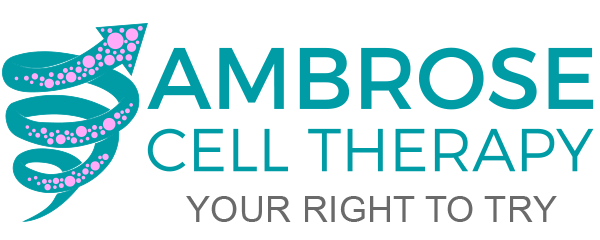

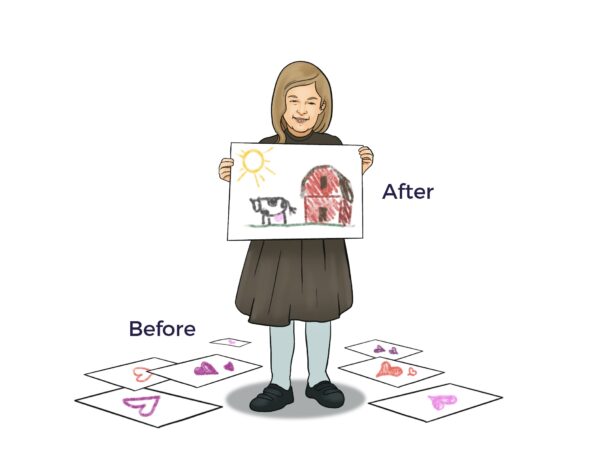
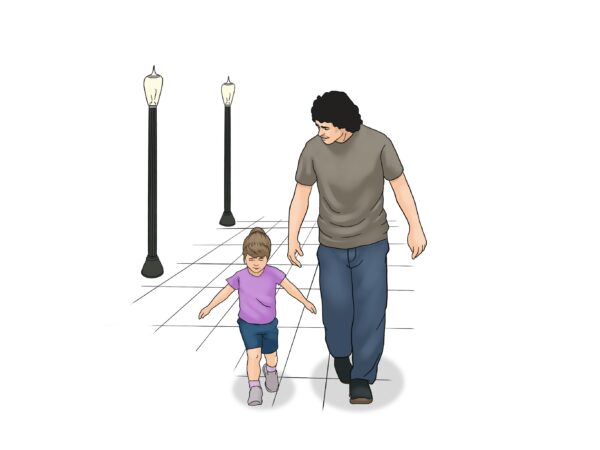

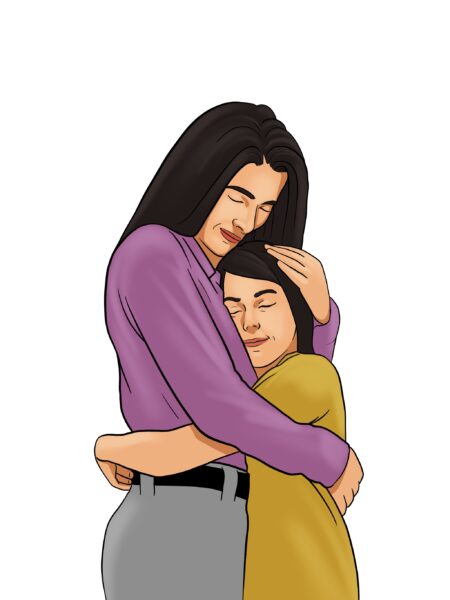
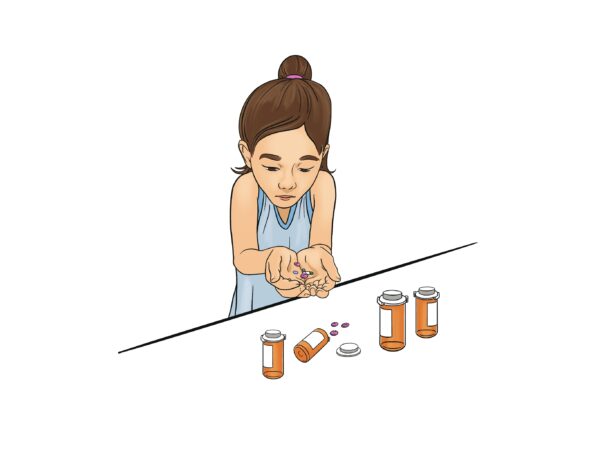 Yet pharma and biotech focus on their unvaried one drug, one disease (or symptom) model. ASD’s diversity of causes and range of symptoms makes that approach unworkable. Additionally, the prescribed drugs often come with black box warnings, a multitude of potential side effects, and unpredictable interactions.
Yet pharma and biotech focus on their unvaried one drug, one disease (or symptom) model. ASD’s diversity of causes and range of symptoms makes that approach unworkable. Additionally, the prescribed drugs often come with black box warnings, a multitude of potential side effects, and unpredictable interactions. 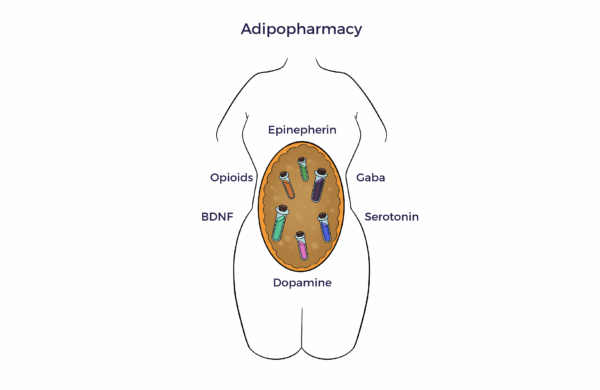
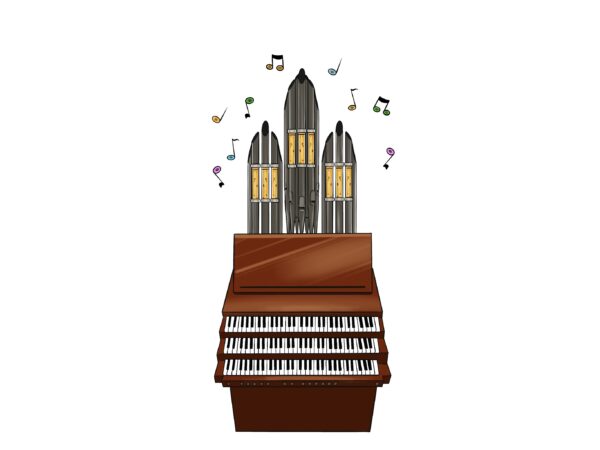 “In my eyes and ears, the organ is the King of Instruments.”
“In my eyes and ears, the organ is the King of Instruments.”

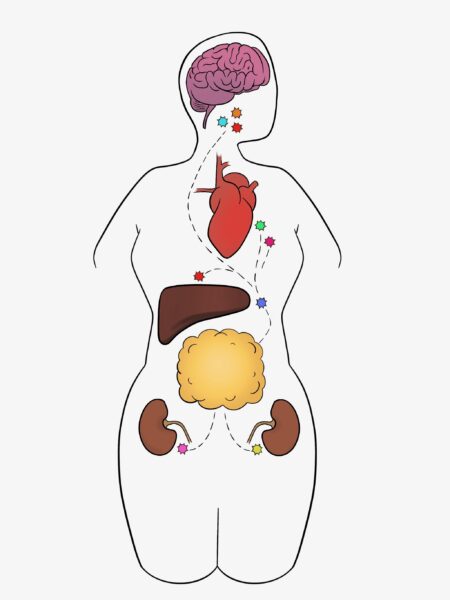
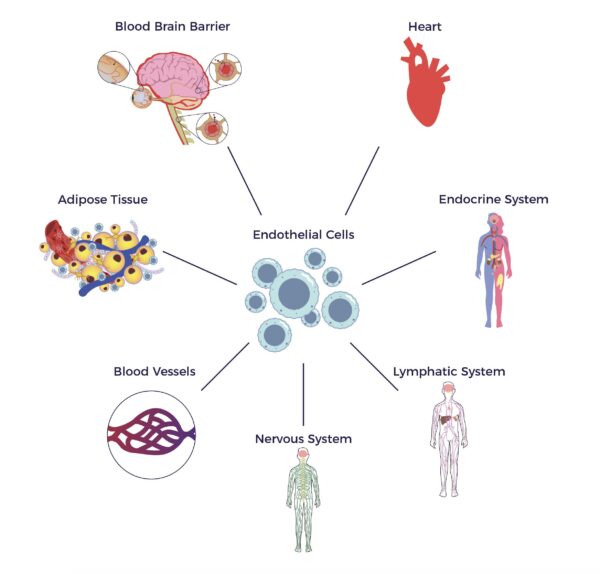
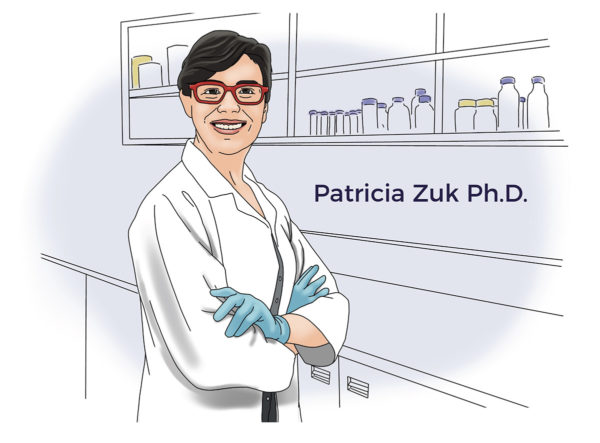 In 2001, UCLA and University of Pittsburgh researchers unveiled a pool of multipotent cells in adipose tissue.
In 2001, UCLA and University of Pittsburgh researchers unveiled a pool of multipotent cells in adipose tissue.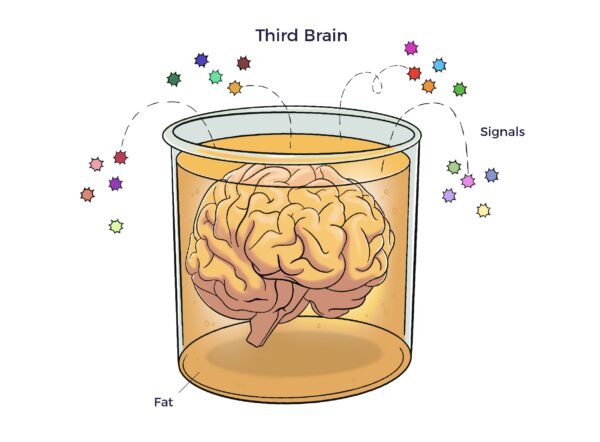 The adipose tissue as a third brain (Chaldakov et al. 2009) connects the adipose tissue secretome with neurochemical, ANS, and multisystem harmony.
The adipose tissue as a third brain (Chaldakov et al. 2009) connects the adipose tissue secretome with neurochemical, ANS, and multisystem harmony.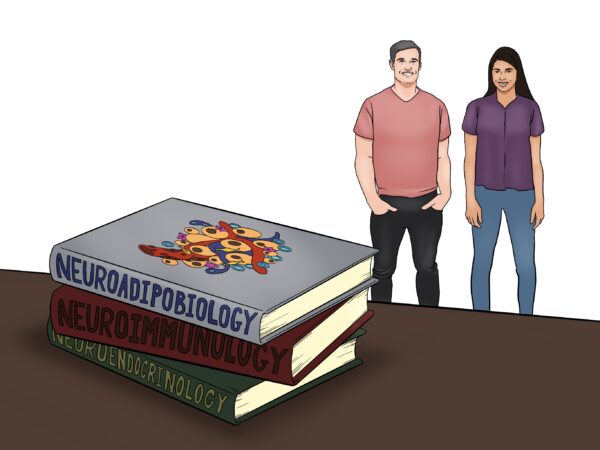

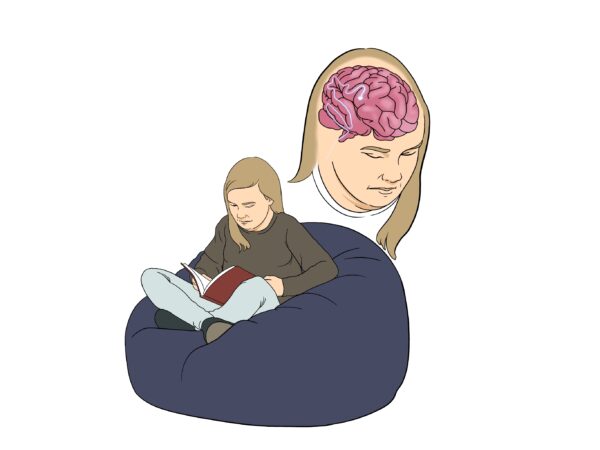

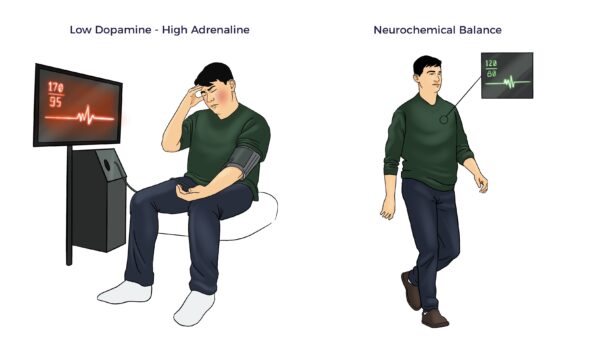

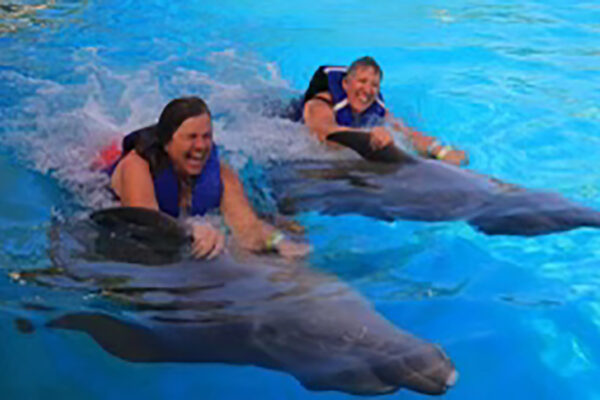 In Oct 2021, Mary Grace, a 58-year-old adventurer, retraumatized her left knee trekking the Himalayas. Until then, she had surmounted a hospitalizing concussion, sports injuries, constant pain, brain fog, and chronic fatigue to scale new heights. But this incident was different – an air ambulance brought her down the mountain.
In Oct 2021, Mary Grace, a 58-year-old adventurer, retraumatized her left knee trekking the Himalayas. Until then, she had surmounted a hospitalizing concussion, sports injuries, constant pain, brain fog, and chronic fatigue to scale new heights. But this incident was different – an air ambulance brought her down the mountain.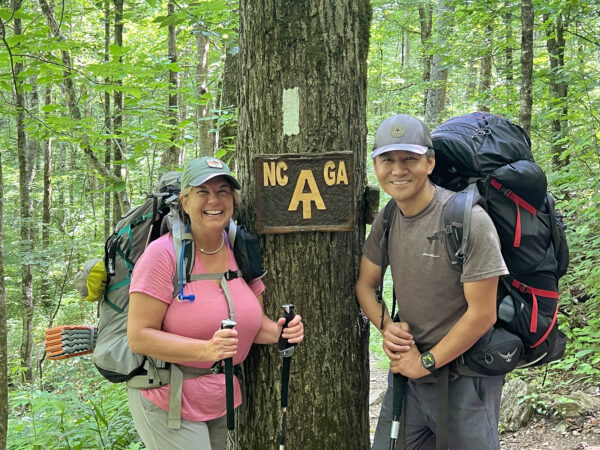 Over the 24 months following her single Ambrose treatment, Mary Grace resumed hiking, skiing, and open-water swimming in Mexico – against the tide, no less. She took up windsurfing alongside whales, too.
Over the 24 months following her single Ambrose treatment, Mary Grace resumed hiking, skiing, and open-water swimming in Mexico – against the tide, no less. She took up windsurfing alongside whales, too.
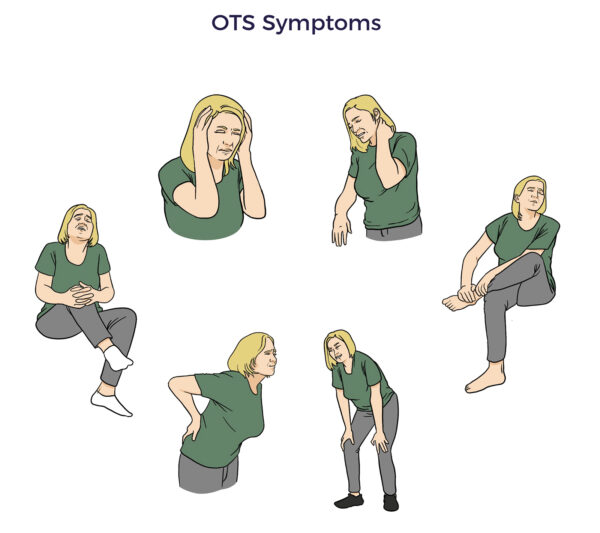 Mary Grace should have been a pillar of health as she approached her sixties, a pivotal point in healthspan. However, her love of demanding sports resulted in overtraining syndrome (OTS).
Mary Grace should have been a pillar of health as she approached her sixties, a pivotal point in healthspan. However, her love of demanding sports resulted in overtraining syndrome (OTS).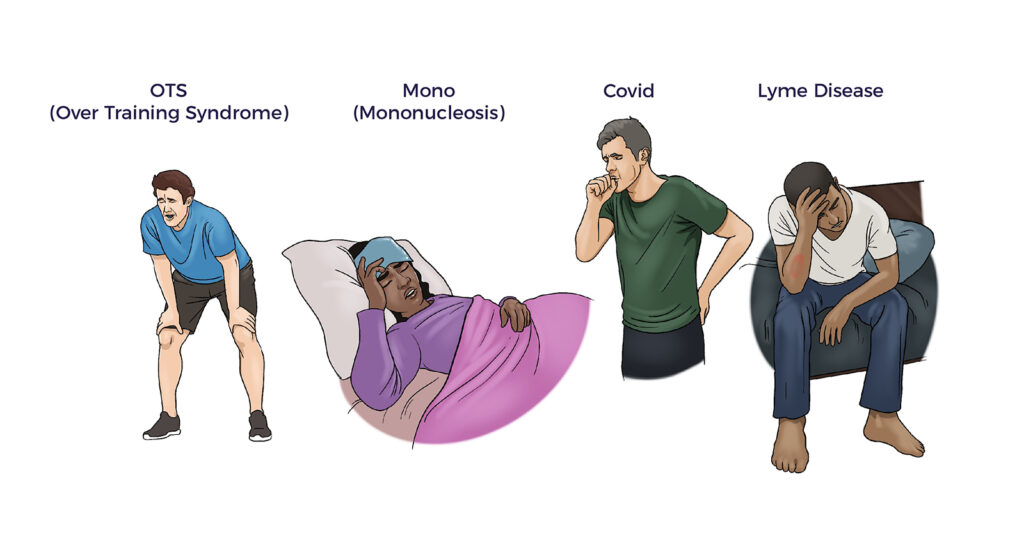
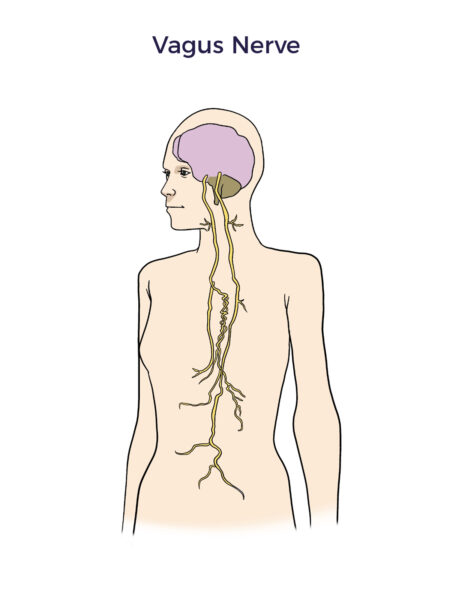 Vagus Nerve
Vagus Nerve In contrast to Mary Grace’s near pain-free turnaround, Tiger Woods epitomizes the risks of excessive training and relying on surgeries, followed by medications, to manage his pain and depression.
In contrast to Mary Grace’s near pain-free turnaround, Tiger Woods epitomizes the risks of excessive training and relying on surgeries, followed by medications, to manage his pain and depression.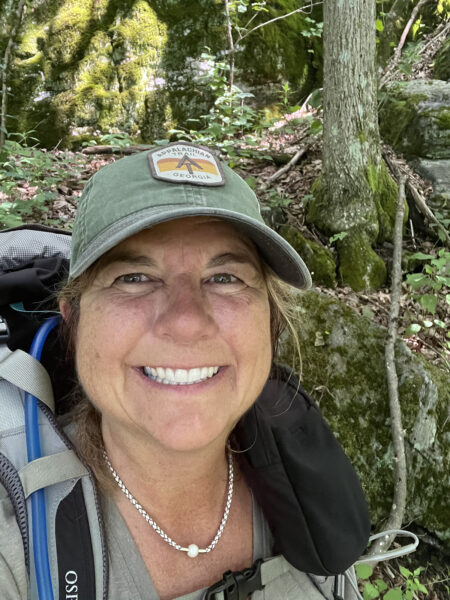 While Mary Grace is not a world-class competitive athlete, the comparison holds. Few women have adventured to so many places in so many ways as her.
While Mary Grace is not a world-class competitive athlete, the comparison holds. Few women have adventured to so many places in so many ways as her.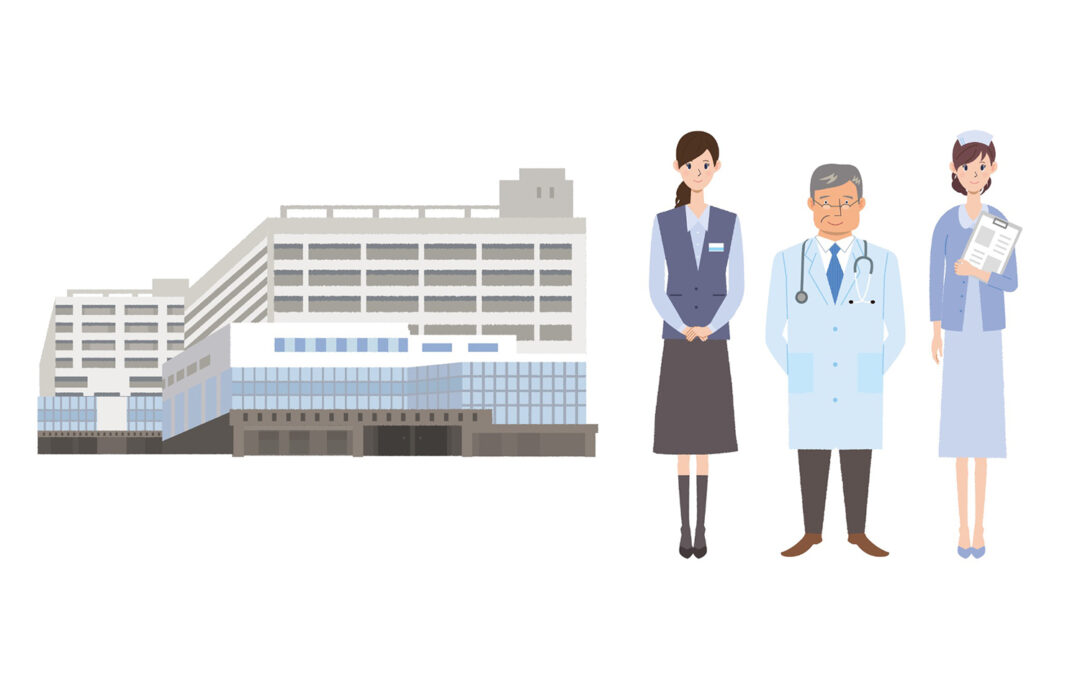
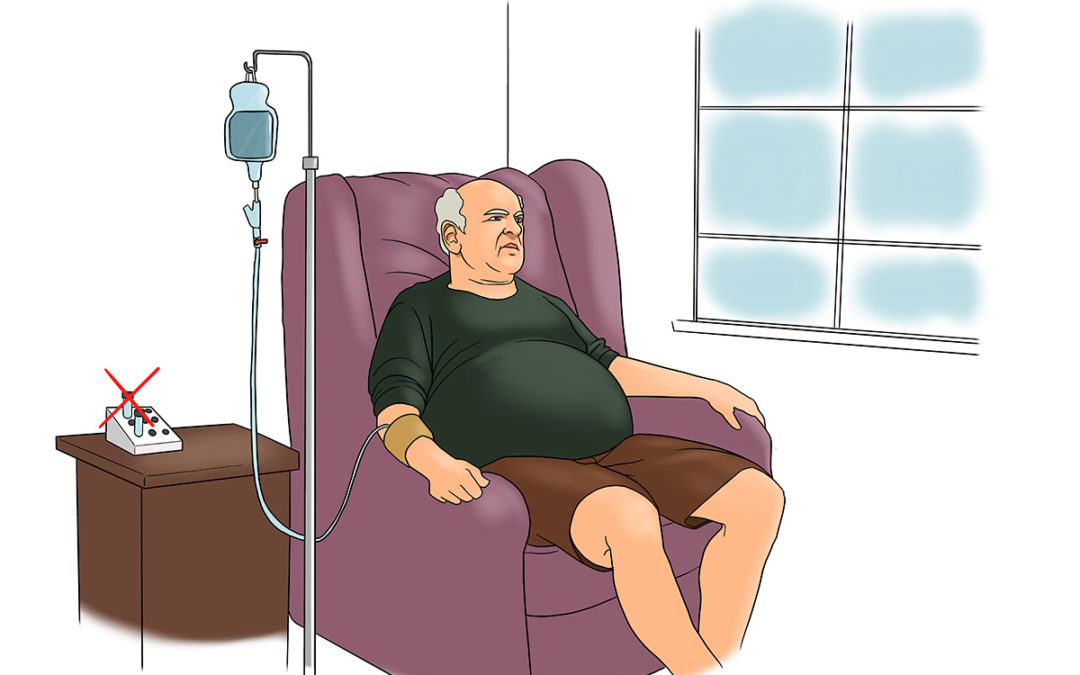
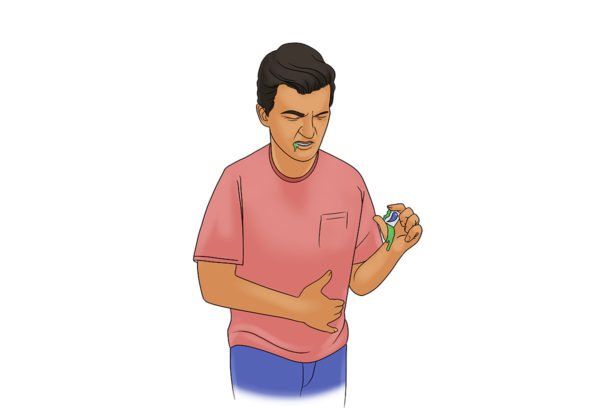 “People often ask if stem cells work. Of course, they work. We are all walking stem cell products – the sperm, and the egg,” the revered James Willerson, MD, Ph.D. said in a talk in 2011.
“People often ask if stem cells work. Of course, they work. We are all walking stem cell products – the sperm, and the egg,” the revered James Willerson, MD, Ph.D. said in a talk in 2011.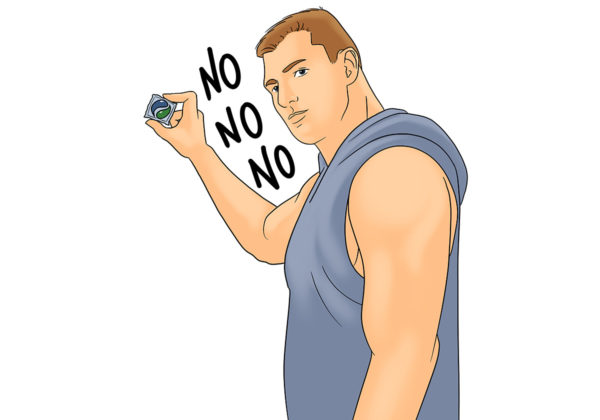
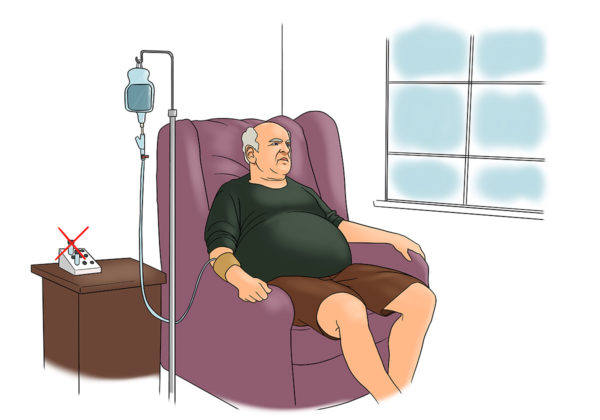 Sadly, as a chiropractor’s patient with long-Covid and congestive heart failure related, “I tried umbilical cord stem cells. They didn’t work.” There were no live stem cells in the product with which he was treated or other commercially available perinatal vials, studies revealed:
Sadly, as a chiropractor’s patient with long-Covid and congestive heart failure related, “I tried umbilical cord stem cells. They didn’t work.” There were no live stem cells in the product with which he was treated or other commercially available perinatal vials, studies revealed: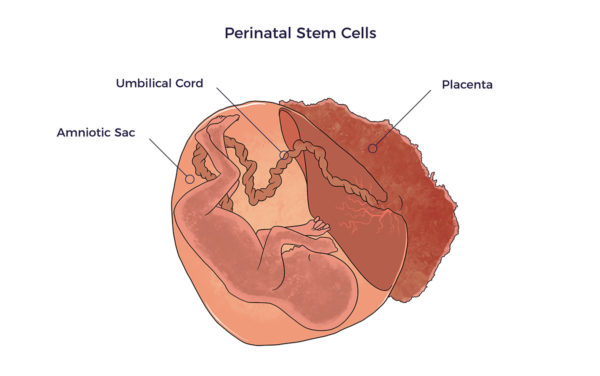 Perinatal refers to just before or shortly after birth. Thus, perinatal stem cells come from birth tissues or fluids, i.e., umbilical cord blood and tissue, placental blood and tissue, and amniotic tissue and fluid.
Perinatal refers to just before or shortly after birth. Thus, perinatal stem cells come from birth tissues or fluids, i.e., umbilical cord blood and tissue, placental blood and tissue, and amniotic tissue and fluid.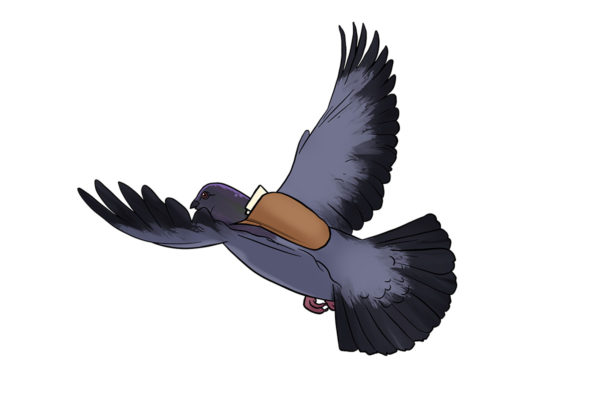 Cells release tiny sacs or vesicles called exosomes. Like carrier pigeons, exosomes carry messages to nearby cells.
Cells release tiny sacs or vesicles called exosomes. Like carrier pigeons, exosomes carry messages to nearby cells.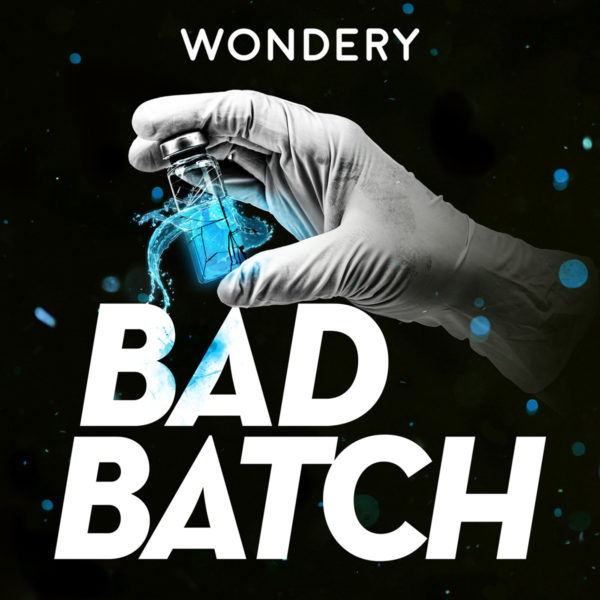
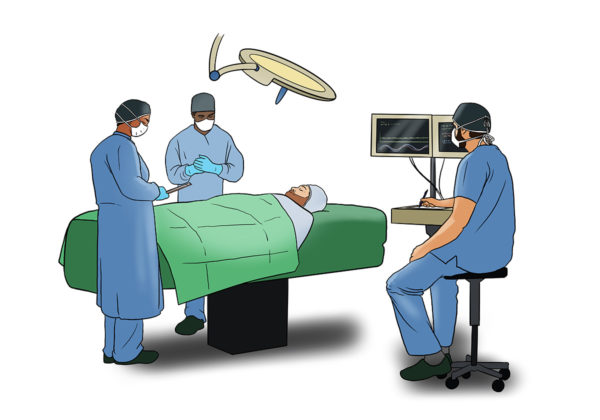
 A doctor wanting to participate in the stem cell wild, wild west asked a lawyer specializing in stem cell regulatory affairs:
A doctor wanting to participate in the stem cell wild, wild west asked a lawyer specializing in stem cell regulatory affairs: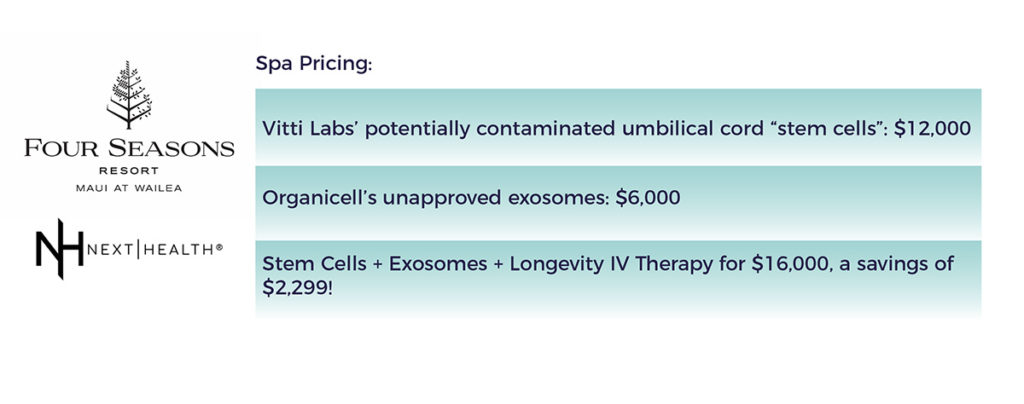 Contrary to the FDA’s warning letters, a NextHealth patient coordinator insisted that Vitti’s and Organicell’s products are FDA-approved and that the manufacturers certify all lots are contaminant-free. Where did she get that idea?
Contrary to the FDA’s warning letters, a NextHealth patient coordinator insisted that Vitti’s and Organicell’s products are FDA-approved and that the manufacturers certify all lots are contaminant-free. Where did she get that idea? At the other end of the spectrum,
At the other end of the spectrum, 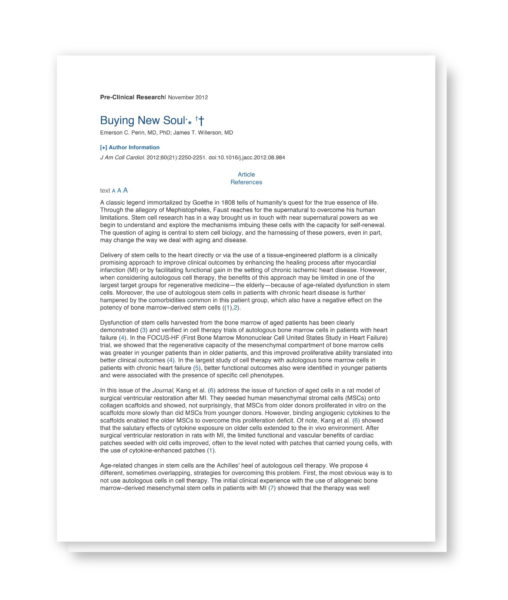 “Of course, they work. We are all walking stem cell products – the sperm, and the egg.” James Willerson, MD, Ph.D. Dr. Willerson went on to publish Buying New Soul (2012). Here he hypothesized that adipose tissue was the best source of adult stem cells.
“Of course, they work. We are all walking stem cell products – the sperm, and the egg.” James Willerson, MD, Ph.D. Dr. Willerson went on to publish Buying New Soul (2012). Here he hypothesized that adipose tissue was the best source of adult stem cells.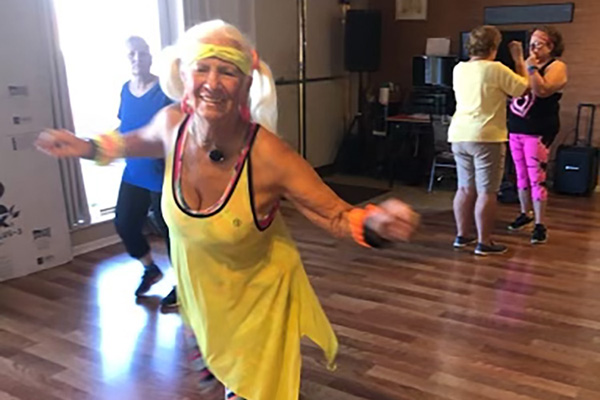
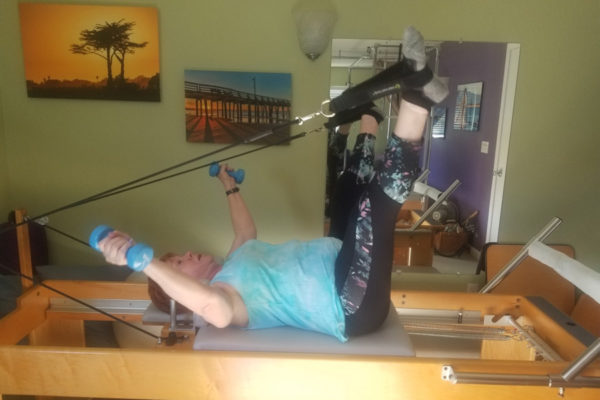

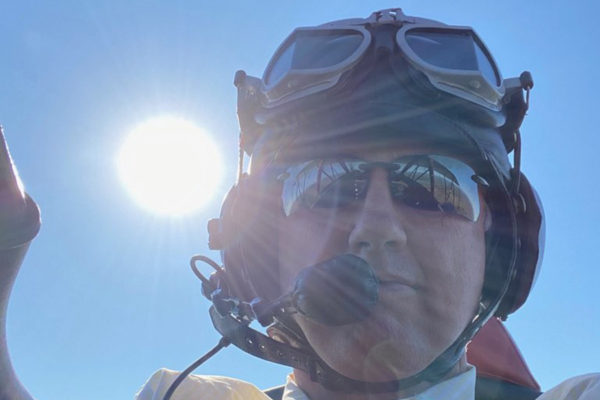
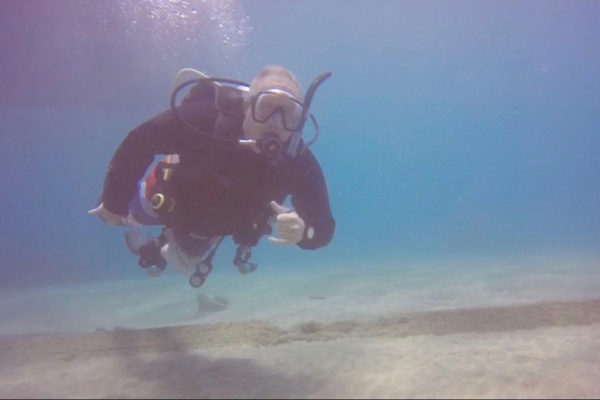


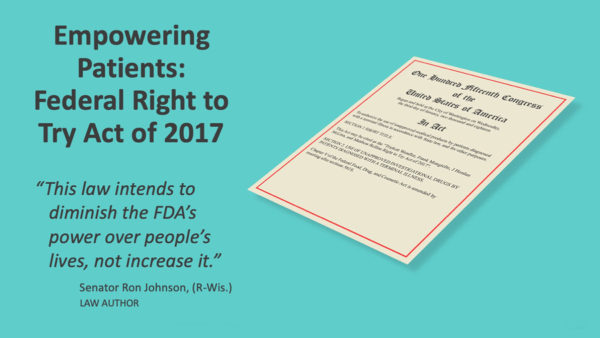 Sam was a productive dentist, recreational golfer, proud parent, and happy husband. However, in 2013 his wife Flo, a retired physician, began a bold twenty-year battle to reverse his dementia, vascular disease, and pre-diabetes. In April 2020, Sam suffered a stroke and contracted Covid and pneumonia in the hospital. He remained there for two months.
Sam was a productive dentist, recreational golfer, proud parent, and happy husband. However, in 2013 his wife Flo, a retired physician, began a bold twenty-year battle to reverse his dementia, vascular disease, and pre-diabetes. In April 2020, Sam suffered a stroke and contracted Covid and pneumonia in the hospital. He remained there for two months.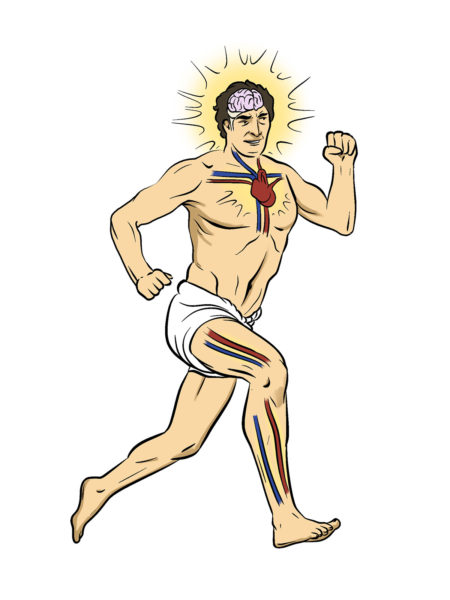 Further, the Greeks developed the first scientific considerations about blood. Back in Homer’s time (8th or 9th Century BC), they summarized four concepts that remain valid to day:
Further, the Greeks developed the first scientific considerations about blood. Back in Homer’s time (8th or 9th Century BC), they summarized four concepts that remain valid to day: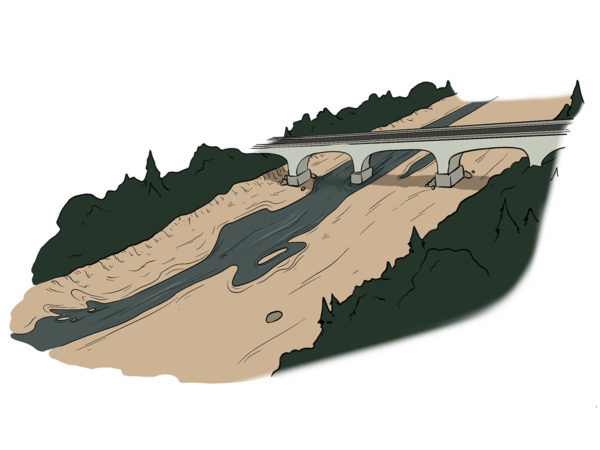 In 1885, Rudolph Virchow coined “ischemia” to characterize the lack of blood flow in an organ or tissue. In plain words, ischemia means blood is not moving through your capillaries, blood vessels, veins, or arteries.
In 1885, Rudolph Virchow coined “ischemia” to characterize the lack of blood flow in an organ or tissue. In plain words, ischemia means blood is not moving through your capillaries, blood vessels, veins, or arteries.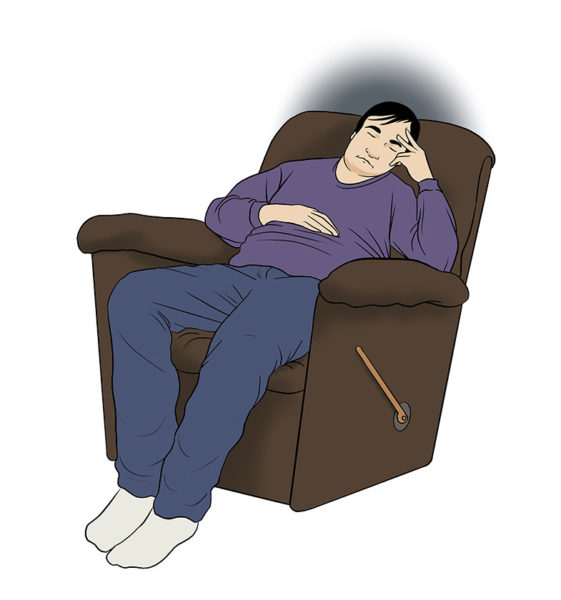 Sam’s long decline
Sam’s long decline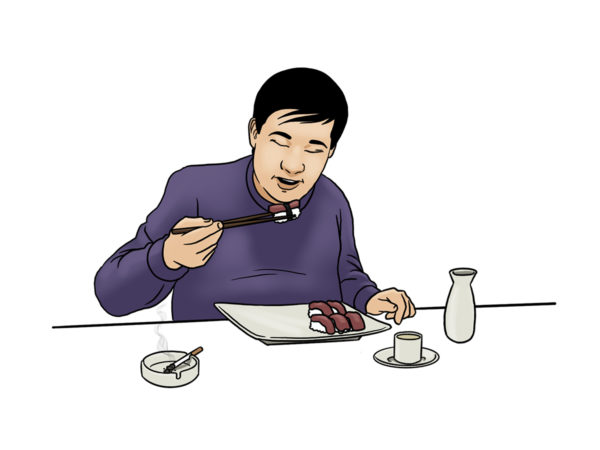 Sam’s history epitomizes the complexity of age-related ill health:
Sam’s history epitomizes the complexity of age-related ill health: Flo also knew to steer clear of drug combinations, including anti-depressants, anti-psychotics, anti-seizure, and sleep meds (polypharmacy). Neurologists prescribe polypharmacy to patients with neurodegenerative diseases despite its well-documented contribution to the progression and severity of dementia. In other words, drug companies profit, and patients pay the price.
Flo also knew to steer clear of drug combinations, including anti-depressants, anti-psychotics, anti-seizure, and sleep meds (polypharmacy). Neurologists prescribe polypharmacy to patients with neurodegenerative diseases despite its well-documented contribution to the progression and severity of dementia. In other words, drug companies profit, and patients pay the price.  Flo believed in the body’s power to heal itself. That is why she was attracted to the RECODE protocol.
Flo believed in the body’s power to heal itself. That is why she was attracted to the RECODE protocol. Flo requested papers supporting potential benefits for Sam’s memory.
Flo requested papers supporting potential benefits for Sam’s memory.
 Per the
Per the 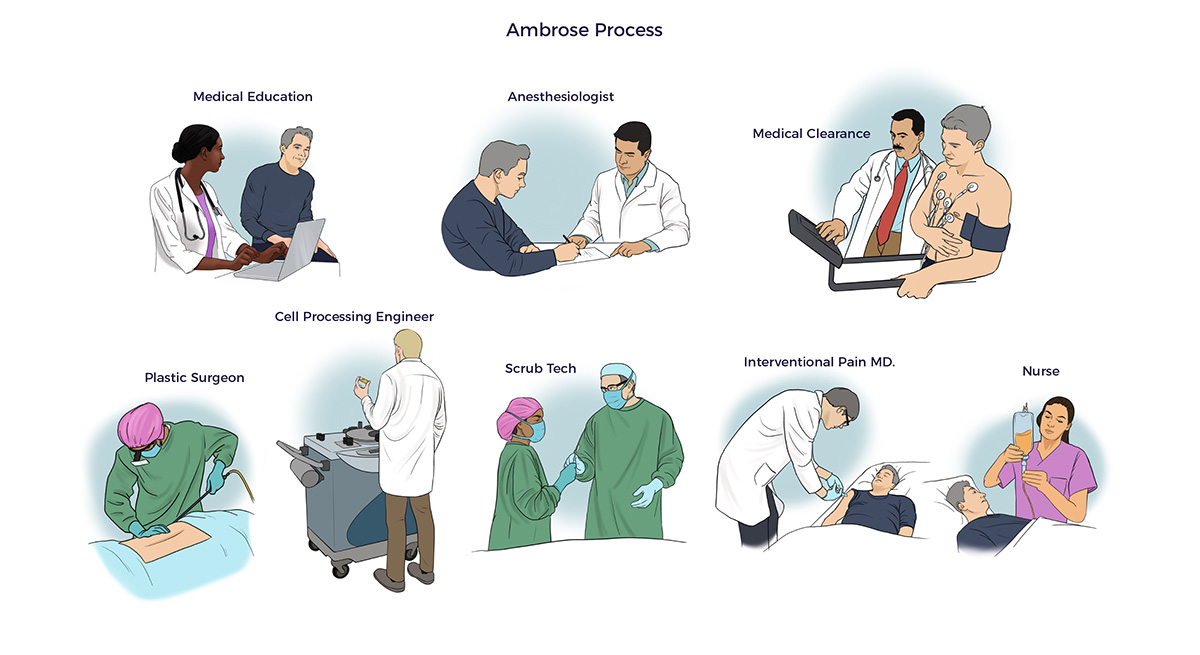
 Consistent with the studies Ambrose provided to Flo, objective evidence indicates cell therapy lowered Sam’s risk of another catastrophic stroke or a heart attack.
Consistent with the studies Ambrose provided to Flo, objective evidence indicates cell therapy lowered Sam’s risk of another catastrophic stroke or a heart attack.

 RJ played baseball, football, snowboarding, and golf growing up.
RJ played baseball, football, snowboarding, and golf growing up.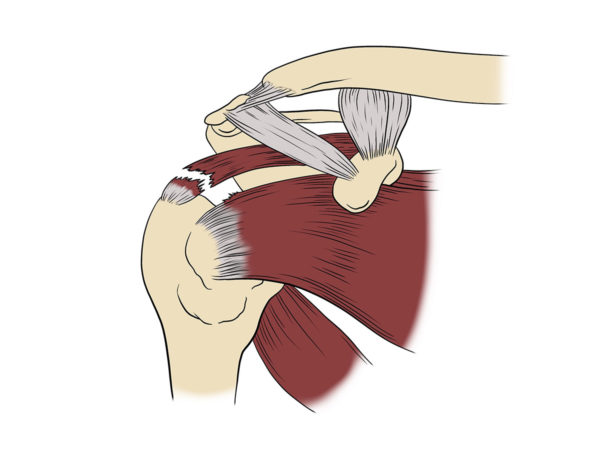 “Nothing showed up on my MRI and X-Ray, but I couldn’t move my arm. I went in for exploratory surgery. The surgeon found my rotator cuff and labrum were shredded.
“Nothing showed up on my MRI and X-Ray, but I couldn’t move my arm. I went in for exploratory surgery. The surgeon found my rotator cuff and labrum were shredded.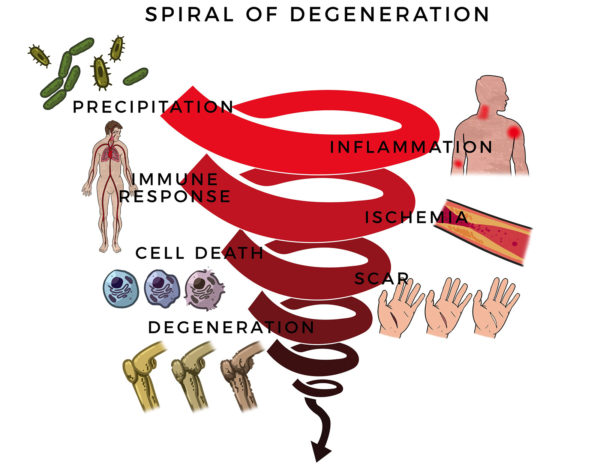 Here, RJ’s massive rotator cuff tear (MRCT) caused disability and pain. An MRCT precipitates a Spiral of Degeneration beginning with inflammation, abnormal immune response, and lack of blood flow. That leads to programmed cell death (apoptosis), scarring, and degeneration.
Here, RJ’s massive rotator cuff tear (MRCT) caused disability and pain. An MRCT precipitates a Spiral of Degeneration beginning with inflammation, abnormal immune response, and lack of blood flow. That leads to programmed cell death (apoptosis), scarring, and degeneration.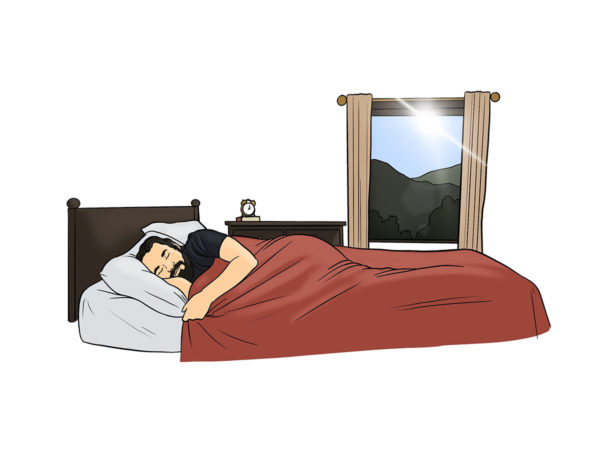 More concerning, RJ experienced symptoms of multisystem dysregulation:
More concerning, RJ experienced symptoms of multisystem dysregulation: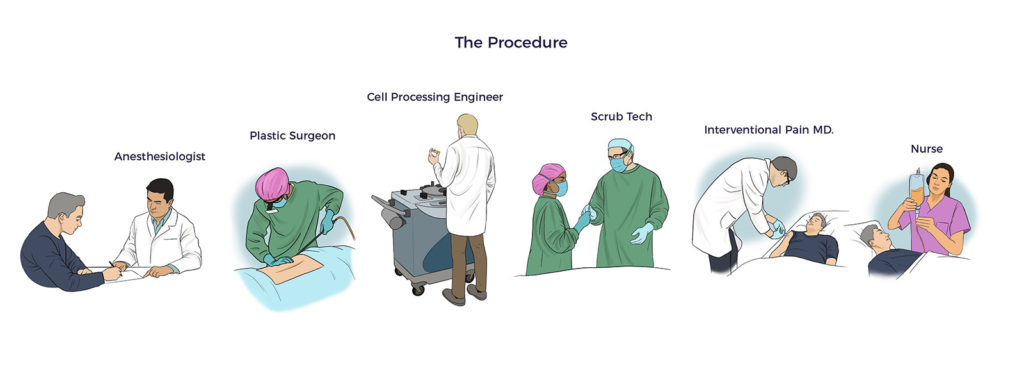
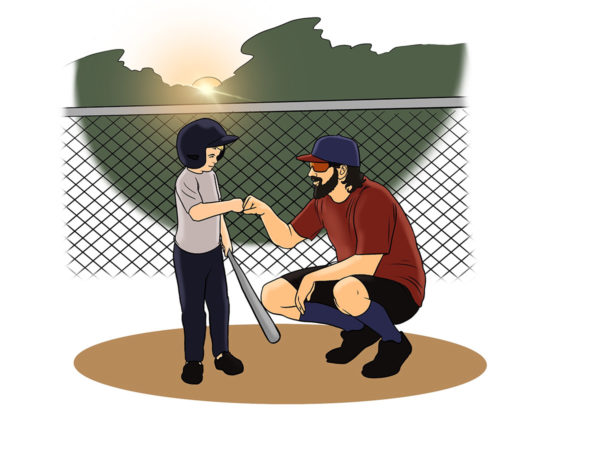 “I don’t feel depressed like I did before. I am optimistic and have more energy. I don’t wake up drenched with sweat and only need about eight hours of sleep now. I used to sleep from 12:00 am to 2:00 pm and take an hour nap too. Now I coach baseball and football 15 hours a day.”, RJ reported.
“I don’t feel depressed like I did before. I am optimistic and have more energy. I don’t wake up drenched with sweat and only need about eight hours of sleep now. I used to sleep from 12:00 am to 2:00 pm and take an hour nap too. Now I coach baseball and football 15 hours a day.”, RJ reported.

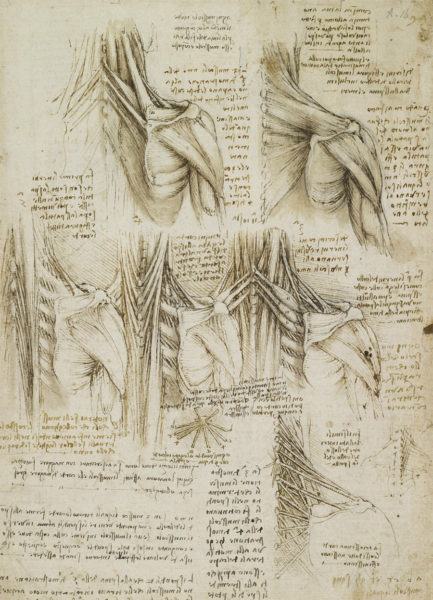 Spine care has its origins in antiquity. The Edwin Smith surgical papyrus, an Egyptian document written in the 17th century BC, is the first known discussion of neck and back-related injuries. Hippocrates (4th century BC) experimented with traction or local pressure to correct spinal deformities. Aristotle also contributed to our current day understanding of the neck and spine.
Spine care has its origins in antiquity. The Edwin Smith surgical papyrus, an Egyptian document written in the 17th century BC, is the first known discussion of neck and back-related injuries. Hippocrates (4th century BC) experimented with traction or local pressure to correct spinal deformities. Aristotle also contributed to our current day understanding of the neck and spine.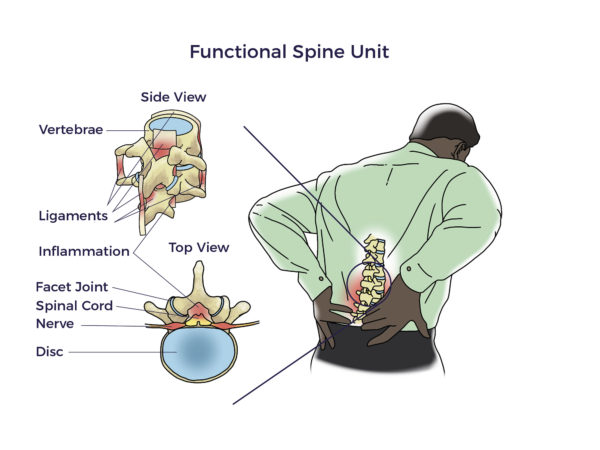 But there was still more to be discovered than the FSU. More recently, researchers began focusing on the vicious interplay involved with traumatic injuries, wear and tear, inflammation, and other diseases (co-morbidities). For example, patients with heart disease, diabetes, neurologic conditions, and autoimmune diseases have a higher prevalence of spine disorders than others without those conditions. In fact, Barb, Trish, Kathy, and Jeff each lived with other chronic debilitating conditions, including arthritis, hypermobility, kidney failure, and spinal cord injury, respectively.
But there was still more to be discovered than the FSU. More recently, researchers began focusing on the vicious interplay involved with traumatic injuries, wear and tear, inflammation, and other diseases (co-morbidities). For example, patients with heart disease, diabetes, neurologic conditions, and autoimmune diseases have a higher prevalence of spine disorders than others without those conditions. In fact, Barb, Trish, Kathy, and Jeff each lived with other chronic debilitating conditions, including arthritis, hypermobility, kidney failure, and spinal cord injury, respectively. 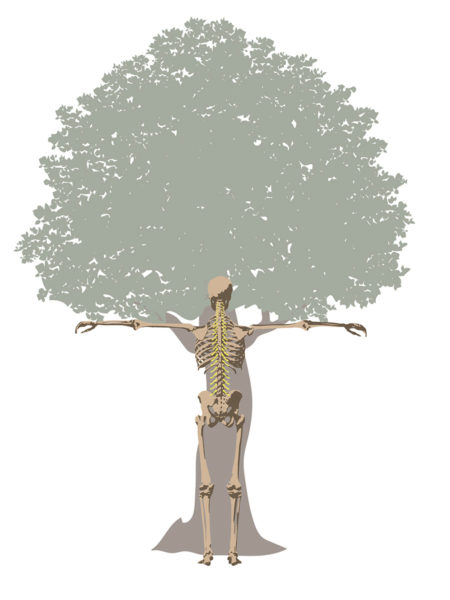 Circling back, in the early 1500s, Leonardo da Vinci took an unusual interest in tree anatomy. His Rule of Trees explained the balance between the trunk and branches of a tree. He counted the rings in tree trunks to determine “the nature of past seasons.”
Circling back, in the early 1500s, Leonardo da Vinci took an unusual interest in tree anatomy. His Rule of Trees explained the balance between the trunk and branches of a tree. He counted the rings in tree trunks to determine “the nature of past seasons.”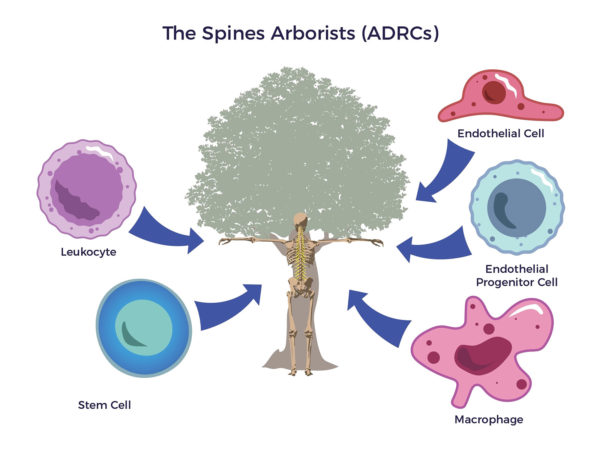 An arborist cultivates trees; tree removal is a last resort. The first thing that goes through their minds is how to save the tree. To do their jobs, arborists cultivate the whole tree. They use fertilizer, irrigation, and other regenerative tools to restore the tree’s trunk, limbs, and leaves.
An arborist cultivates trees; tree removal is a last resort. The first thing that goes through their minds is how to save the tree. To do their jobs, arborists cultivate the whole tree. They use fertilizer, irrigation, and other regenerative tools to restore the tree’s trunk, limbs, and leaves.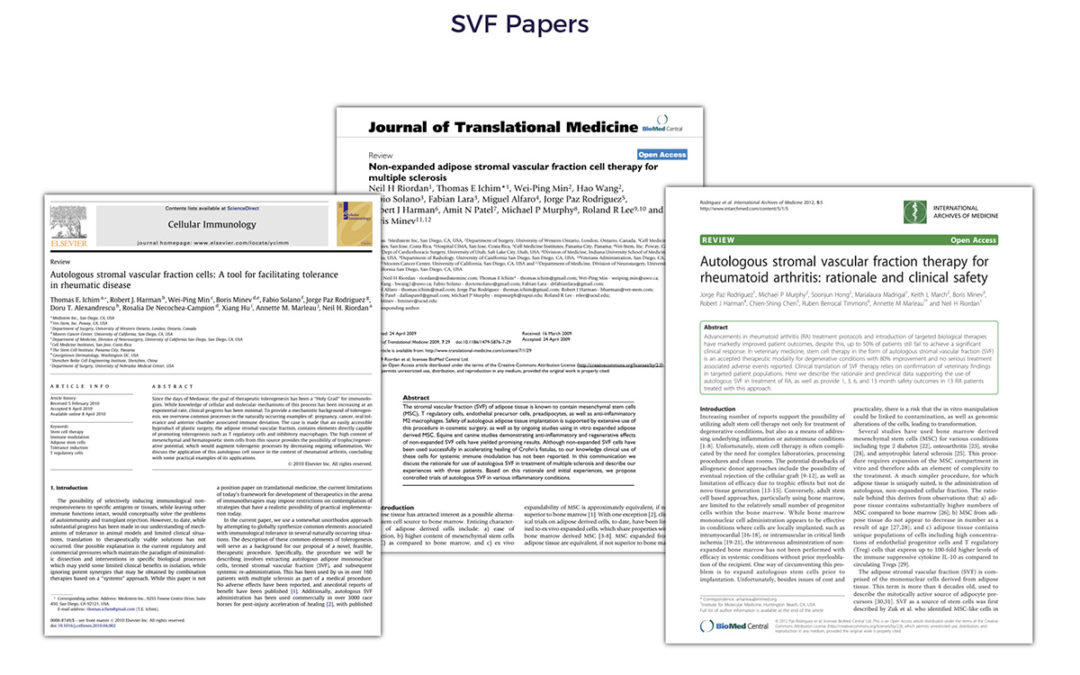

 Muhammed Ali’s 1960 Olympic Gold medal started his ascent to being “The Greatest,” but the countless blows to his head – which he welcomed to tire his opponent out – ended in a years-long failed fight to save his brain.
Muhammed Ali’s 1960 Olympic Gold medal started his ascent to being “The Greatest,” but the countless blows to his head – which he welcomed to tire his opponent out – ended in a years-long failed fight to save his brain. In 2000, Tim retired from offshore powerboat racing with four world speed records. He once hit upwards of 180 mph.
In 2000, Tim retired from offshore powerboat racing with four world speed records. He once hit upwards of 180 mph. Essential tremor is a nervous system (neurological) disorder that causes involuntary and rhythmic shaking. It can affect almost any part of your body, but the trembling occurs most often in your hands — especially when you do simple tasks, such as drinking from a glass, handwriting, or tying shoelaces.
Essential tremor is a nervous system (neurological) disorder that causes involuntary and rhythmic shaking. It can affect almost any part of your body, but the trembling occurs most often in your hands — especially when you do simple tasks, such as drinking from a glass, handwriting, or tying shoelaces.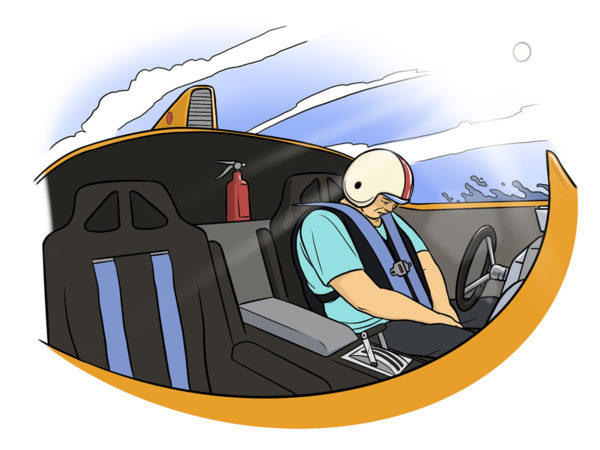 “I must have had 1,000 concussions while racing. I probably went unconscious 100 times behind the wheel from the G-forces,” Tim estimated.
“I must have had 1,000 concussions while racing. I probably went unconscious 100 times behind the wheel from the G-forces,” Tim estimated.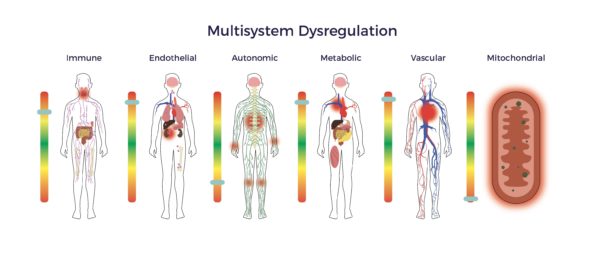
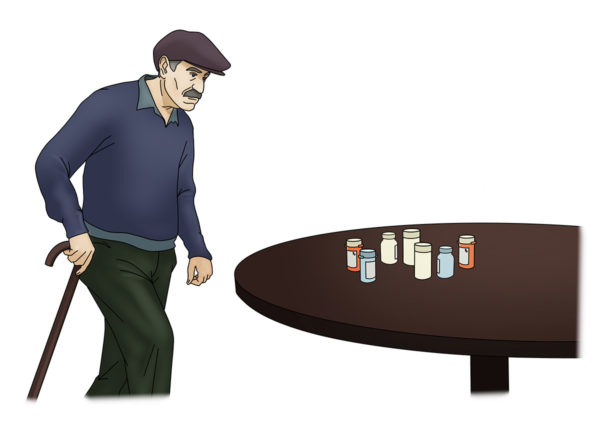 To solve for this, doctors prescribe patients drugs for each ailment or symptom, e.g., Sinemet for Parkinson’s, Ambien for sleep, steroids for arthritis, opioids for pain, and so forth.
To solve for this, doctors prescribe patients drugs for each ailment or symptom, e.g., Sinemet for Parkinson’s, Ambien for sleep, steroids for arthritis, opioids for pain, and so forth.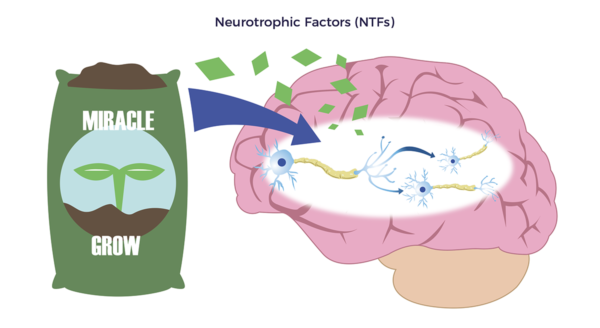
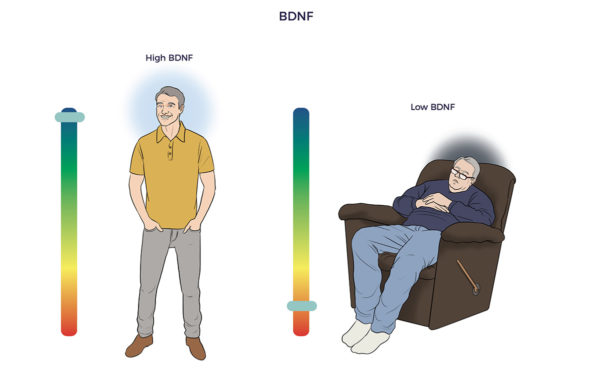 John Hopkins researchers developed a BDNF-blood test that could have predicted the severity of Ali’s head damage and how he would fare. Their study showed that patients with brain injuries have less than one-third of the BDNF as those with healthy brains.
John Hopkins researchers developed a BDNF-blood test that could have predicted the severity of Ali’s head damage and how he would fare. Their study showed that patients with brain injuries have less than one-third of the BDNF as those with healthy brains. ADRCs also enrich the brain with vascular endothelial growth factor (VEGF). VEGF restores blood flow and reduces inflammation in withering tissues, blood vessels, and organs. One study found higher levels of VEGF in asymptomatic seniors who died with amyloid plaques compared to symptomatic Alzheimer’s patients.
ADRCs also enrich the brain with vascular endothelial growth factor (VEGF). VEGF restores blood flow and reduces inflammation in withering tissues, blood vessels, and organs. One study found higher levels of VEGF in asymptomatic seniors who died with amyloid plaques compared to symptomatic Alzheimer’s patients.